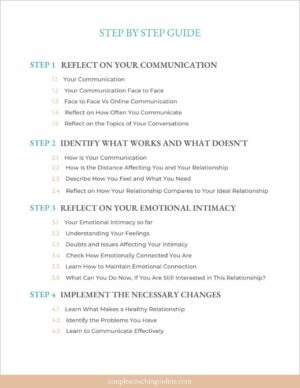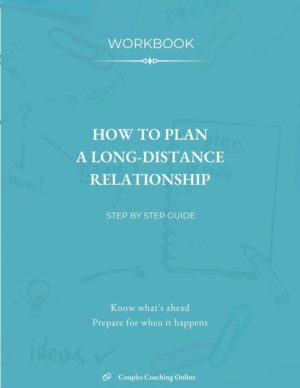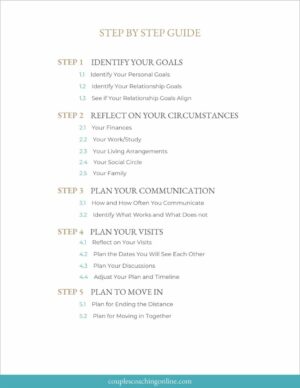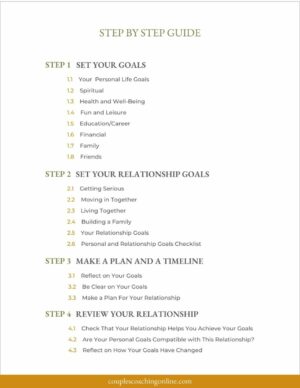How to Survive a Long-Distance Relationship

Ever wondered if your love can conquer the challenges of time and distance? Brace yourself, because we’re about to reveal the secrets to making your long-distance relationship an epic love story!
We get it – long-distance relationships can be tough, but fear not, because we have the ultimate survival guide for you. By mastering the art of heartfelt communication, setting realistic expectations, igniting romance from afar, and creating unforgettable moments, you and your partner can create a love story that defies distance and leaves others in awe.
In this article, we’ll unlock the hidden gems of long-distance relationships, you’ll uncover insider tips to maintain that deep connection, conquer the hurdles that come your way, and create a bond that’s unbreakable. From unleashing the power of technology to planning jaw-dropping reunions, this article will equip you with the tools and inspiration to make your long-distance relationship a one-of-a-kind adventure.
So, buckle up and get ready to turn the challenges into triumphs as you learn how to navigate the distance and forge a love that’s extraordinary.
1. Avoid Impatience and Negativity
Impatience and negativity can kill long-distance relationships. Long periods of physical separation may test your patience and lead to negative emotions. In the long run, impatience and negativity can breed resentment, and hinder emotional intimacy.
Longing to be physically together in the same place can be overwhelming. Quite often one partner is able to handle the physical separation better, while the other partner may begin getting impatient. If this happens, try to see each other’s point of view, so every person can feel heard and understood.
Challenges and uncertainties can fuel negative thoughts, casting doubt on your relationship. You can deal with impatience by focusing on love, commitment, shared goals, and personal growth.
Embrace the idea that being apart is temporary and every moment of every day brings you closer. Imagine the future where you live together in the same place or at least in the same city. Make a plan and a timeline to make sure you are on track towards the future that is worth waiting for.
You can counteract negativity by practising gratitude and reframing your perspective. Celebrate milestones, cherish moments of connection, and appreciate personal growth. Talking about things that matter will help you embrace the moment and feel connected.
Last, but not least, remember to have fun. Boring and monotonous relationships are a burden for all people involved. Don’t be afraid to spice things up with an online game or a date over a video call (more on that later).
If you’re up for it, you may even start a youtube channel together. When you spend time enjoying each other’s company, only then do you get a real shot at having a fun and loving relationship.
To wrap up, impatience and negativity are among the top challenges that kill long-distance relationships. You can learn to spot them and others by reading our dedicated article on red flags in long-distance relationships.
2. Avoid Unrealistic Expectations
In the realm of long-distance relationships, it’s crucial to avoid falling into the trap of unrealistic expectations. You might yearn for the picture-perfect romance, where distance doesn’t pose a challenge. However, setting unrealistic expectations can place undue pressure on both you and your partner, potentially causing disappointment and frustration.
Long-distance relationships require flexibility and understanding. While it’s natural to crave constant togetherness, it’s important to acknowledge the reality of your situation. Recognise the limitations imposed by being apart and the unique dynamics it creates. Remember that every relationship is different, and comparing yours to others can lead to unrealistic expectations.
Instead, set realistic goals and milestones that are attainable given your particular circumstances. By establishing clear and realistic expectations, you can build a foundation of understanding and avoid unnecessary disappointment. Don’t forget to talk about your needs, desires, and limitations, so you are on the same page.
Celebrate the small victories and milestones along the way, appreciating the effort you and your partner invest in maintaining your connection.
Having a realistic mindset will better equip you to navigate the ups and downs that come with being physically separated. Here are a few points to keep in mind when it comes to setting realistic expectations:
- Discuss your expectations from each other and this relationship.
- A plan can help you keep on track with your goals.
- When setting goals and expectations be specific and clear about what you want and expect from your partner and your relationship.
- You may have an expectation that your partner should be able to guess what you want before you even know what you want. This alone can create a great deal of confusion. Do not expect your partner to guess what you want and how you want it, tell them.
If the issue of unrealistic expectations resonates with you, feel free to learn how you can manage them in our article by clicking the link below.
3. Don’t Let Romance Fade
Being apart for long periods can make it challenging to maintain that spark and intimate connection. However, with conscious effort and creativity, you can prevent the flame of romance from flickering out.
First and foremost, prioritise quality time together, even if it’s through virtual means. Create a cosy and romantic atmosphere by lighting candles, playing soft music, or even cooking the same meal together. Taking the time to engage in meaningful conversations and share your feelings and experiences can help maintain a deep emotional connection.
Send surprise gifts or heartfelt letters to remind your long-distance partner of your love and affection. Plan virtual date nights where you can watch a movie together, play an online game you both love and do something you both enjoy. These shared experiences can help recreate the excitement and intimacy of being physically together.
Don’t underestimate the power of physical touch, even from afar. Send each other care packages with meaningful items or scented items that remind you of each other. And don’t forget the power of words. Express your love and desire through heartfelt messages, love letters, or even romantic poems. These gestures can keep the romance alive and remind your partner of your unwavering affection, bringing life back into your relationship.
When romance fades, it becomes near impossible to survive a long-distance relationship. So, don’t be afraid to discuss your desires, fantasies, and ways to express your love and build the path for the future of your shared dreams.
4. Avoid Monotony
In long-distance relationships, physical absence can sometimes lead to a sense of monotony. However, with a little creativity, you can break free from the mundane and infuse your relationship with meaningful rituals that keep things exciting and fresh.
Plan virtual dates or activities together. Explore new hobbies or interests that you can engage in simultaneously, such as cooking the same recipe, watching a movie together while video calling, or even participating in online classes or workshops. We have a whole article dedicated to exciting activities you can do online and during your visits.
Plan surprise dates and gifts to keep the element of excitement alive. It could be as simple as organizing a virtual game night with friends or sending a care package filled with their favourite things. These unexpected gestures show your thoughtfulness and dedication.
Additionally, embrace the power of anticipation. Plan future visits or reunions together, even if they seem far off. Having something to look forward to can reignite the spark and give you hope and excitement during challenging times.
5. Maintain Individuality
Maintaining individuality while making a long-distance relationship work is vital for the growth and strength of both partners. It’s crucial to strike a healthy balance between your personal life pursuits and the shared journey with your partner.
Prioritise self-care and personal growth. Engage in activities that bring you joy and fulfilment, whether it’s pursuing a hobby, engaging in physical exercise, or dedicating time to personal development. When you invest in yourself, you experience a sense of vibrancy and fulfilment, which ultimately benefits both you and your partner.
Express your needs and desires to your partner, ensuring that there’s a shared understanding and respect for each other’s space and independence. Openly discuss your personal goals, aspirations, and the steps you’re taking to achieve them.
Remember, to maintain individuality, you should feel comfortable expressing your feelings and talking about your life. Embrace your individuality and support each other’s journeys to deepen your intimacy and connection. When you are together, be fully present for each other and when you are not in contact, concentrate on your personal life goals and ambitions.
Allow ample time for your personal growth and development. Begin by spending one-third of your time building your relationship and two-thirds pursuing your hobbies and interest.
6. Don’t Neglect Communication
Communication is the lifeline of a regular relationship, and in a long-distance setup, it becomes even more crucial.
Firstly, talk about your preferred means of keeping in touch, whether it’s through video calls, phone calls, text messages, or a combination of different platforms. Understand each other’s preferences to ensure that you can connect in a way that feels comfortable and fulfilling for both parties.
From phone calls to instant messaging apps, technology offers ways to make your interactions more vibrant and engaging, so you can stay connected in creative and meaningful ways.
Regular and consistent communication is key to staying on the same page. Set aside dedicated time to talk so that you can fully focus on each other. Create a routine, whether it’s a daily check-in, scheduled video call, or even writing letters to each other.
Effective communication also involves active listening and empathy. Show genuine interest in your partner’s thoughts, feelings, and experiences. Be fully present in the conversation, offering emotional support and understanding each other’s point of view. Active listening and open dialogue can deepen your connection and help you develop emotional intimacy. If you are ready to invest in your relationship and improve communication with your partner, our workbook is a great place to start.
Healthy communication is a two-way street that requires both speaking and listening with intention and empathy. When one partner is trying to reach out, share and connect, while the other partner isn’t paying attention, it can be a very lonely experience for the person who is trying to feel connected but instead is left feeling abandoned.
To feel connected, make sure to take time to hear each other. When one person is talking and the other person isn’t listening, this can lead to an emotional disconnect and a loss of trust. The whole point of a relationship is to connect with the person you care about. When you spend time talking but not connecting, it may not be a situation that’s worth your while.
Furthermore, don’t shy away from discussing difficult topics. Open and honest conversations about expectations, fears, and concerns help build trust and strengthen your connection. Don’t be afraid to have difficult conversations as they can help you address any issues that arise and work together to find resolutions. Clarity and understanding can pave a way forward that contributes to your life and your relationship.
Surviving a long-distance relationship requires effective communication, and you can learn all about it in our special article.
7. Build a Foundation of Trust and Security
Trust and security are the pillars of making your long-distance relationship work. Without a strong foundation of trust, the challenges of physical separation can become even more daunting.
Establish clear expectations, boundaries, and commitments. Talk about what trust means to each of you and the actions that contribute to building trust. By having these conversations, you create a shared understanding and make sure you are on the same page.
Consistency and reliability play a significant role in building trust. Honour your commitments and be dependable in your actions and words. Follow through on your promises, even in small matters. When both partners demonstrate reliability, it strengthens the belief that you can depend on each other.
Be honest with each other and don’t be afraid to express your feelings, doubts and concerns. Share the ups and downs of your personal lives, as well as your dreams and aspirations. By being transparent, you create an environment of authenticity and vulnerability, which deepens your intimacy. Remember, your partner can also be your best friend.
Avoid secrecy or hiding information, as it erodes trust and can lead to unnecessary doubts and insecurities. Talk about difficult topics and address any concerns or doubts as they arise. Work together to find solutions and reassure each other, so every person knows about the state of the relationship.
You can demonstrate trust through your ability to talk freely about different issues, making an effort to stay connected and showing care and emotional support for each other’s well-being.
Feel free to check out our dedicated article on how to build trust in long-distance relationships.
8. Harness Technology Wisely
In today’s digital era, technology offers a myriad of opportunities to bridge the physical gap and enhance your relationship. By harnessing technology wisely, you can create a sense of closeness and maintain a strong connection. And, in doing so, you can make your relationship more complete and your lives more wonderful.
Video calls are a valuable tool for long-distance couples. They provide a visual and auditory experience that closely resembles face-to-face interaction. They allow you to see each other’s expressions, hear each other’s voices, and feel more connected.
Remember to strike a balance between virtual interactions and real-world experiences. While technology can bridge the gap, it’s equally essential to make plans for in-person visits and physical connection whenever possible.
Be mindful of the potential pitfalls of excessive screen time and virtual dependence. Allocate time to unplug and focus on individual activities, self-reflection, and personal growth. Moments of solitude and offline experiences may contribute to your overall life and well-being.
Balance virtual interactions with real-life experiences, and always prioritise the quality of your connection over the quantity of screen time.
9. Plan for Reunions
The anticipation and excitement of upcoming reunions can provide a much-needed boost of in-person interaction to you and your long-distance partner. Here are some practical long-distance relationship tips to make the most of your reunions by planning and maximising the time you spend together when you get to be in the same place.
Firstly, communicate and coordinate your schedules well in advance. Plan your visits together, taking into consideration both partners’ availability and commitments. This allows you to align your calendars and make the necessary arrangements for travel and accommodations that fit both of your lives.
When you’re together, make every moment count. In addition to enjoying each other’s company, plan for future reunions to keep the excitement alive. Discuss and set goals for the next time you will be together, whether it’s a planned visit, a vacation, or a special event. Having something to look forward to can help you stay motivated and maintain a positive outlook during periods of separation.
While long-distance arrangements can work well in the early stages, in the long run, it’s crucial to transition from a virtual connection to in-person experiences. Meeting face-to-face allows you to establish a relationship with the real person rather than an idealised version created in your mind.
One of the best things you can do while being apart is to make a solid long-term plan for your future together be it in the form of a marriage or simply sharing your lives in the same city. Remember, that it’s not a hope or an idea, it’s a strategy for you to breach the physical gap that will give you something to look forward to.
Good planning can also help you ensure that you have enough time to share fun moments with the other person while enjoying your individual lives.
We have thorough workbooks designed to assist you and your partner in making concrete plans to achieve your goals.
For some related reading, consider these articles:
10. Leverage Support from Loved Ones
When you’re in a long-distance relationship, the support and understanding of loved ones can make a significant difference in navigating the challenges you face when you are physically apart from the person you love. Building a strong support network around you and your partner can provide much-needed encouragement, advice, reassurance and hope.
Talk with your best friend, close friends and family members who are empathetic, understanding, and supportive but who can also give you objective advice. By opening up, you allow them to understand your situation better and offer their support.
Stay connected with your loved ones and involve them in your relationship. Share updates about your partner, talk about your plans, and include them in your virtual hangouts or activities. This not only keeps them involved but also helps them develop a connection with their partner, creating a supportive environment.
On the flip side, one caveat to keep in mind is to not rely on others’ success stories. Every person is different and every long-distance relationship is unique with its own intricacies and complexities.
11. Consider Professional Help
Sometimes, despite our best efforts, the challenges of a long-distance relationship can feel overwhelming. In such situations, seeking professional help from experts can provide invaluable guidance and support.
Professional coaches understand the intricacies of maintaining relationships when couples are physically apart. By working with a relationship coach, you can receive impartial relationship advice and gain insights and practical strategies tailored to your specific situation.
One of the major benefits of seeking professional help is having a neutral and unbiased perspective. They can offer guidance on effective communication techniques, conflict resolution strategies, and ways to strengthen the emotional bond.
Professional help can also offer a safe space for you and your partner to express your concerns, fears, and aspirations openly in an environment where you can explore deeper emotions, address unresolved issues, and work through challenges together. They can assist you in building a solid foundation of trust, emotional connection, and intimacy.
Remember, seeking professional help is not a sign of weakness but a proactive step towards strengthening your relationship. It demonstrates your commitment to overcoming obstacles and investing in the future of your partnership. Professional guidance can offer clarity, reassurance, and practical tools to help you navigate the complexities of your long-distance relationship.
Conclusion
In conclusion, navigating a long-distance relationship requires patience, understanding, and dedication. While it may have its challenges, it’s important to remember that a physical gap doesn’t have to be a barrier to love and connection. By embracing the tips and strategies discussed throughout this article, you can create a thriving and fulfilling relationship, even when miles apart.
Managing expectations, keeping the romance alive, maintaining open communication, building trust and security, leveraging technology, planning visits and reunions, seeking support from loved ones, and considering professional help are all valuable tools in your long-distance relationship toolkit. And, don’t forget frequent in-person visits.
Remember, time apart offers you an opportunity for personal growth, as well as growth as a couple. Use this time to explore your individual interests and goals while working towards your shared dreams. Find creative ways to keep the spark alive and feel connected.
Being physically separated for long periods means a lack of physical intimacy, which generally leads to sexual frustration and faded feelings. Sooner or later you begin to feel like you are living two different lives instead of building one together. The expression “distance makes a heart grow fonder” is more true for geographically close relationships where couples know what they want from their future but for some reason, they might be physically apart for a few weeks.
It’s normal to experience moments of sadness or a loss of spark, but with understanding and a willingness to adapt, you can overcome these challenges. Stay committed to each other, support one another, and celebrate the milestones and successes along the way. Healthy relationships require each person to invest ample time to build a life together.
For a hands-on approach to your relationship, consider using resources like workbooks or guides.
In some cases, seeking professional help from experts specialising in long-distance relationships can offer invaluable guidance tailored to your specific needs. Their expertise can provide fresh insights, communication techniques, and tools to nurture your connection.
Many long-distance couples successfully navigate their relationships, and you can too. Be in the moment and plan for the future. Stay positive, stay connected, and together, you can build a strong and lasting bond that transcends the miles.
Frequently Asked Questions about Surviving a Long-Distance Relationship
Do long-distance relationships last?
Absolutely! Long-distance relationships can definitely last. With strong communication, trust, commitment, and a shared vision for the future, couples can overcome the challenges of physical separation and build a lasting connection.
How do you keep a long-distance relationship alive?
Keeping a long-distance relationship alive requires creativity and willingness to make your long-distance relationship work. Regular communication, trust-building activities, surprise gestures, virtual dates, and planning visits are some ways for every person to feel involved and excited.
How do most long-distance relationships fail?
Long-distance relationships can fail due to various reasons, including lack of communication, trust issues, unrealistic expectations, and the inability to meet each other’s needs. It’s crucial to address these challenges proactively, seek solutions together, and maintain a strong foundation of trust and connection.
Is a long-distance relationship healthy?
Yes, a long-distance relationship can be healthy if both partners have a strong foundation of trust, are able to talk about their issues, and have a shared commitment to each other.
Is it normal to lose the spark in a long-distance relationship?
It’s not uncommon for couples to experience a temporary loss of spark due to the challenges of being apart. To reignite the romance, you, first of all, should identify if the loss of interest is due to some deeper underlying issues or if it is a matter of making your relationship more fun.
How often do long-distance couples see each other?
The frequency of visits in long-distance relationships can vary depending on factors such as availability and financial resources. Some couples may see each other monthly or every few months, while others may have less frequent visits. It’s important to find a balance that works for both partners and to make the most out of the time spent together.
How do you deal with LDR sadness?
When dealing with sadness in a long-distance relationship it’s important to acknowledge and communicate your feelings with your partner. Finding healthy ways to cope, such as maintaining a support system, engaging in self-care, and staying positive, can help navigate the emotional ups and downs. Additionally, planning visits and setting goals for the future can provide hope and motivation.












